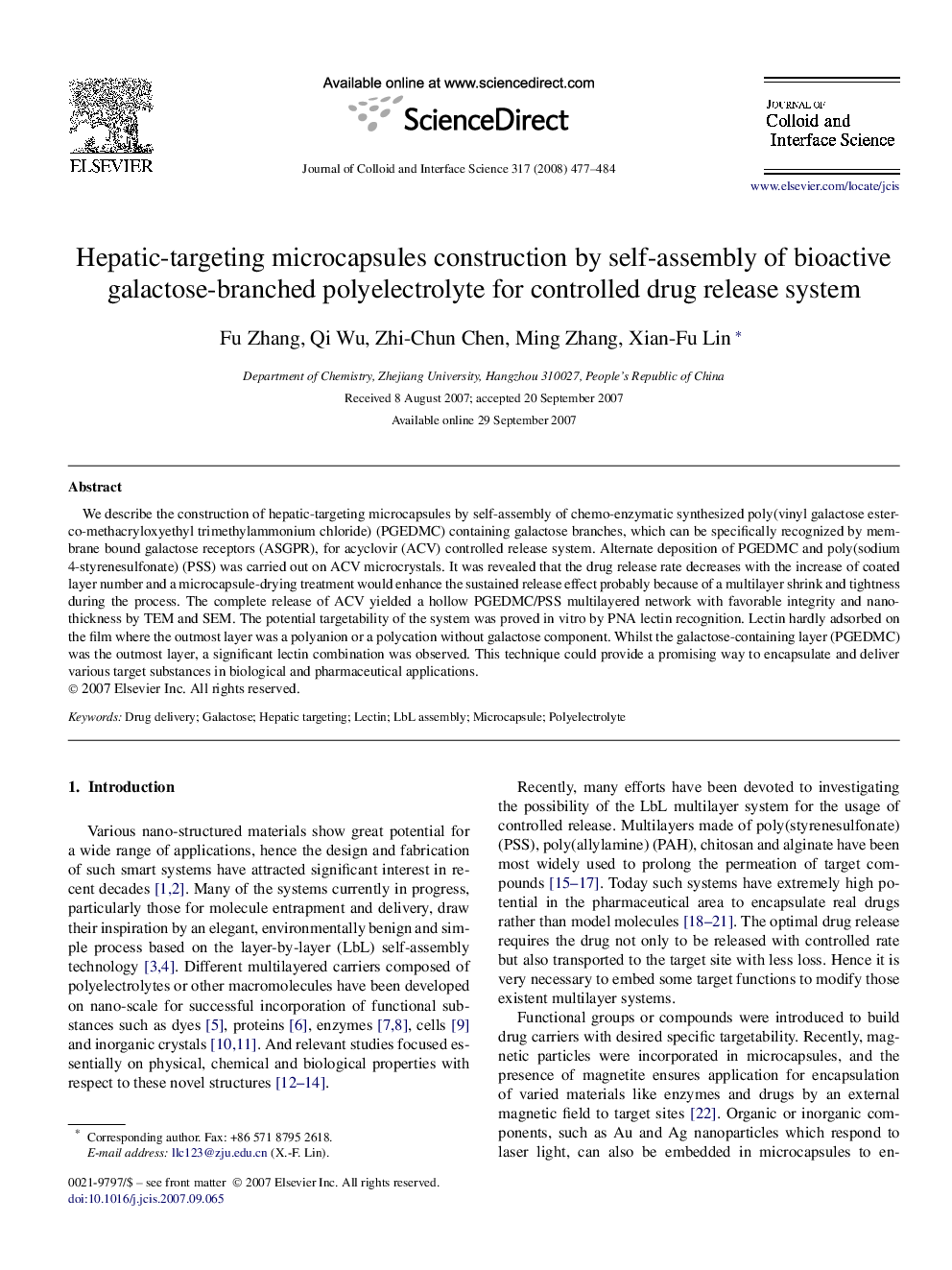| Article ID | Journal | Published Year | Pages | File Type |
|---|---|---|---|---|
| 611748 | Journal of Colloid and Interface Science | 2008 | 8 Pages |
We describe the construction of hepatic-targeting microcapsules by self-assembly of chemo-enzymatic synthesized poly(vinyl galactose ester-co-methacryloxyethyl trimethylammonium chloride) (PGEDMC) containing galactose branches, which can be specifically recognized by membrane bound galactose receptors (ASGPR), for acyclovir (ACV) controlled release system. Alternate deposition of PGEDMC and poly(sodium 4-styrenesulfonate) (PSS) was carried out on ACV microcrystals. It was revealed that the drug release rate decreases with the increase of coated layer number and a microcapsule-drying treatment would enhance the sustained release effect probably because of a multilayer shrink and tightness during the process. The complete release of ACV yielded a hollow PGEDMC/PSS multilayered network with favorable integrity and nano-thickness by TEM and SEM. The potential targetability of the system was proved in vitro by PNA lectin recognition. Lectin hardly adsorbed on the film where the outmost layer was a polyanion or a polycation without galactose component. Whilst the galactose-containing layer (PGEDMC) was the outmost layer, a significant lectin combination was observed. This technique could provide a promising way to encapsulate and deliver various target substances in biological and pharmaceutical applications.
Graphical abstractHepatic targeting multilayer drug delivery system: layer-by-layer assembly of PGEDMC and PSS on drug crystal to control the release in buffer. The multilayer bearing galactose residues outside can be recognized by PNA lectin.Figure optionsDownload full-size imageDownload as PowerPoint slide
